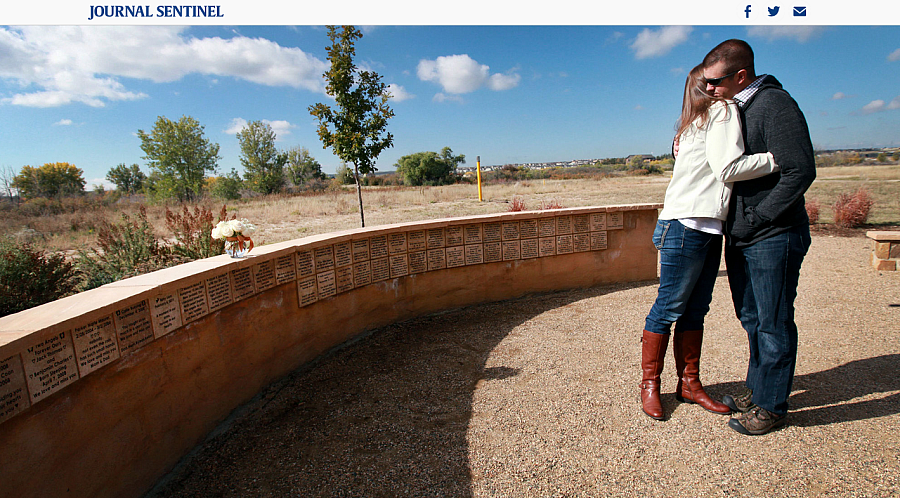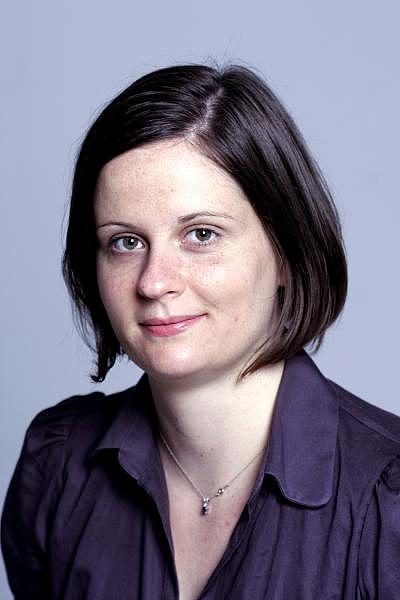Deadly Delays: Q&A with Ellen Gabler, Part 2

(Image from The Milwaukee Journal Sentinel)
For the first part of this two-part Q&A, click here.
On Friday, Ellen Gabler – part of the Selden Ring-winning team at the Milwaukee Journal Sentinel – explained how they exposed that children were dying because of the slow processing of blood tests.
The final part of our conversation is below.
Q: What was the threshold you had to cross before you knew that the story could live up to the title “Deadly Delays”?
A: Mark Johnson established early on with his story about Colton Hidde that the consequences of messing up newborn screening are dire. Then, we just continued to find more examples and hear terrible stories from parents about what had happened to their children.
Q: How did you track down families who had lost children or whose children had suffered serious harm?
A: A mentor of mine once told me that you do not write a major story about something unless you find the perfect example and you keep looking and looking until you find the perfect example. So I basically just put a lot of work into finding people and did not give up until I felt like I had really exhausted the process.
The first example (in Wisconsin) came to Mark because he has great sources and those sources respect him as an excellent science writer. Good lesson there.
I found families for my story several ways:
I used LexisNexis and Google to find lawsuits. I basically used all kind of search words – “inborn metabolic error” is the technical way to talk about these genetic disorders, and then I’d couple that and other phrases with different disorders. To be honest, it was a fair amount of shooting in the dark.
Advocacy organizations were somewhat helpful too.
I found the best luck with Facebook. There's a group for everything these days and I contacted support groups for parents of kids with various disorders. I had determined which disorders were especially important to catch early, then found groups associated with that.
I asked the moderator to message the entire group to see if their babies' samples had been delayed. I also asked just generally the time it took for the parents to be notified about their child's disorder. Several families had no idea that a delay of a week is unacceptable and the reason their baby was so sick.
I also always ask sources: "Is there anyone else I should talk to? Do you know of anyone else who has been affected by XYZ?"
Ellen Gabler
Q: What were some of the biggest hurdles you had to overcome when reporting this series?
A: I faced two big challenges. The first was understanding and establishing what was the "right" way to do newborn screening. There weren't really any obvious guidelines that experts in the field knew about or followed. For example, in many states, lab directors didn't track timeliness or didn't notify hospitals if samples were even incredibly late – like 14 or more days.
Eventually we figured out that there were guidelines set by a federally backed group; it's just that no one followed them. All that was buried in federal reports and meeting minutes.
The other major hurdle was getting all of the data and getting it into a standard format for all states. I felt like a lot of places were just ignoring me, hoping I'd go away. Persistence was the only way to overcome that and at first I felt weird about calling someone 10 to 15 times but I kind of got over it.
Then when all the data came in I had to figure out how to standardize it and compare apples to apples.
Q: What has surprised you most about the reaction to the series?
A: It was immediate. Several hospitals and states promised to fix the problem before the series even ran. Many of them even thanked us because they simply hadn't been aware of the problem themselves. In many cases, state labs and health departments were not tracking the timeliness of newborn screening samples or were not providing data and feedback to the hospitals.
The animosity from many of the state labs faded too. Previously, many people were very upset that I'd requested the data in the first place. But once they understood the problem, and understood that it was widespread and absolutely did not cause any confidentiality issues in releasing it, some of them were actually happy everything had been brought to light. Now they can just fix it, and babies can be safe. That is obviously the most important thing.
One final thing. The success of this project was really due to incredible teamwork. Besides the reporters, the news apps developer, Allan James Vestal, and our photographer, Krystina Wentz-Graff, the designers, copy editors and editors, Greg Borowski and George Stanley, were vital to this process. They insisted we meet an extremely high bar.

